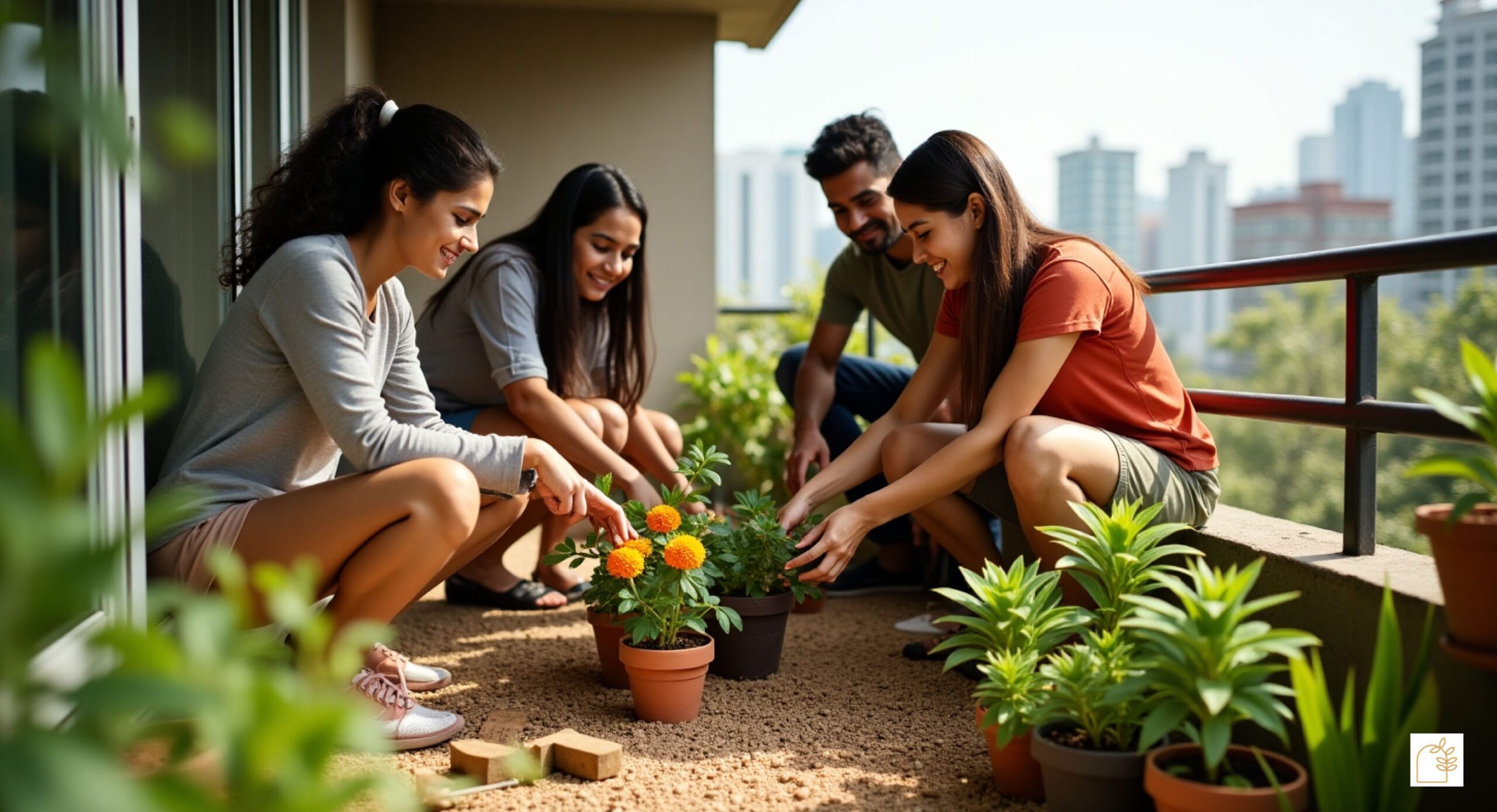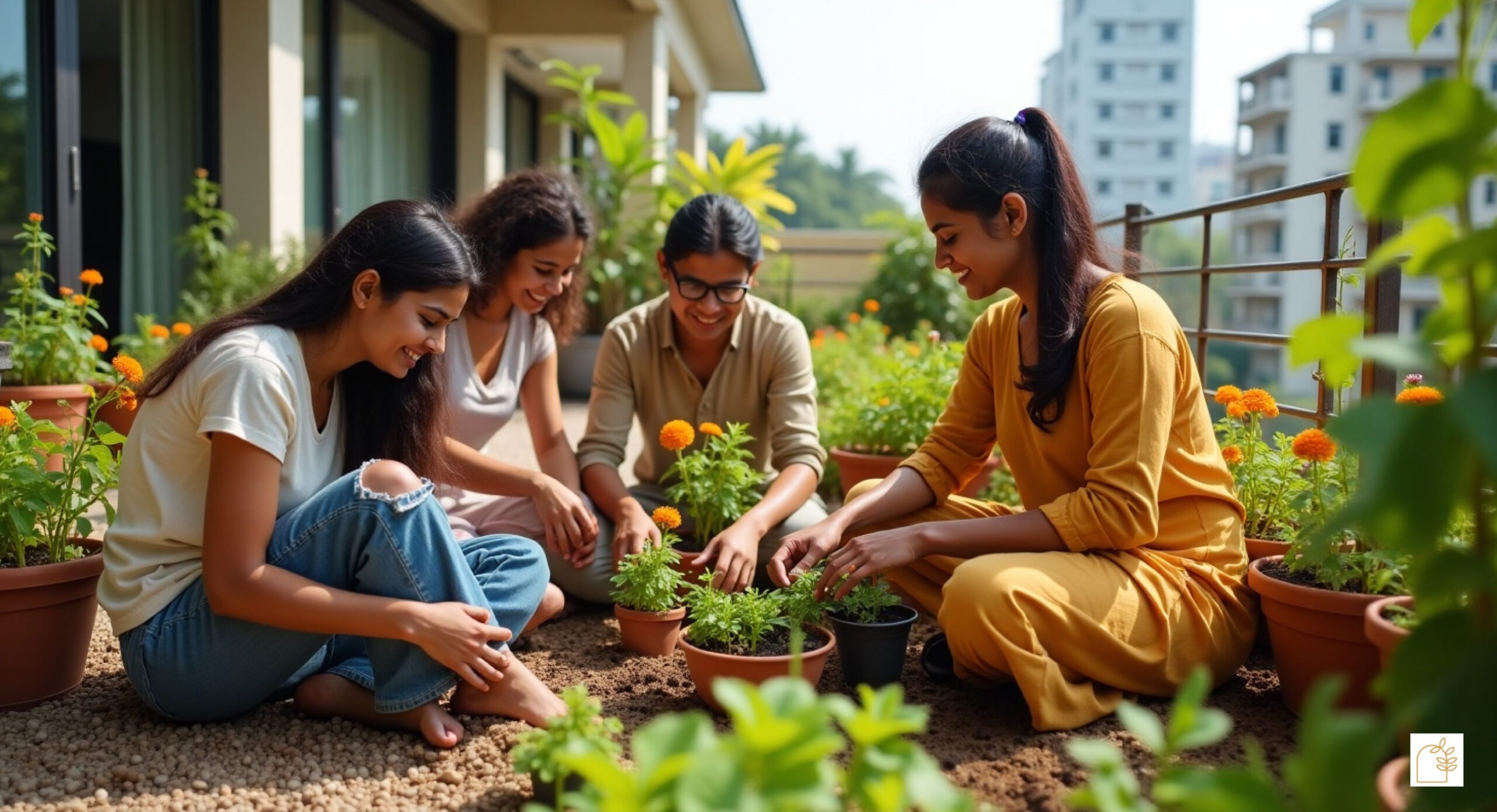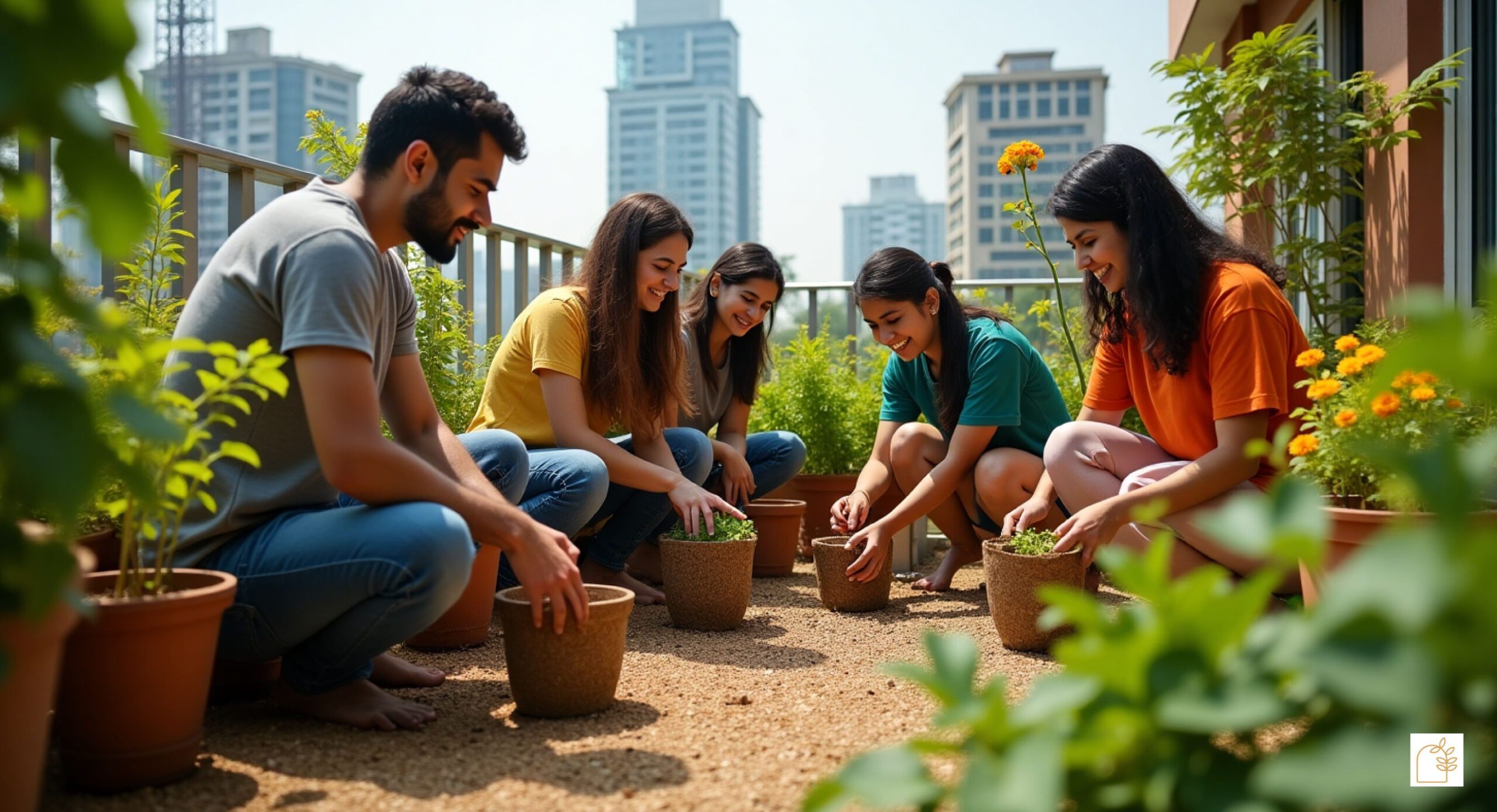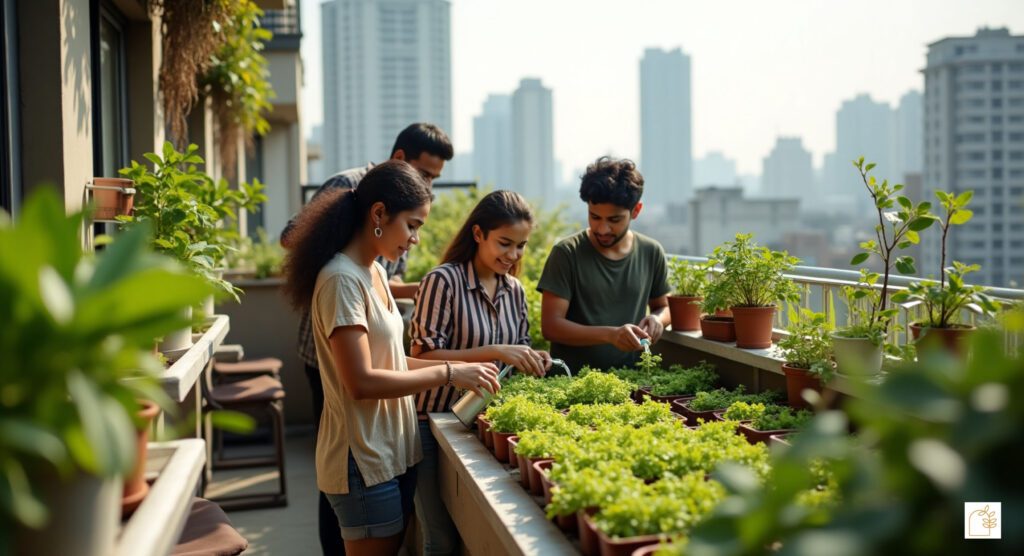In 2025, waterwise landscaping is transforming Indian gardens, balconies, and community spaces, especially in water-stressed cities like Bengaluru, Chennai, and Delhi. With 70% of India’s population facing urban water scarcity (IMD, 2024) and 3,500 IGBC-certified green projects promoting sustainability (FICCI, 2024), waterwise landscaping conserves water, supports local ecosystems, and enhances home aesthetics. As India’s $250 billion real estate market grows (Knight Frank, 2024) and 60% of urban Indians embrace eco-friendly hobbies (Financial Express, 2024), these techniques are vital for homeowners, renters, and community gardeners.
Why Waterwise Landscaping Matters in 2025

Waterwise landscaping minimizes water use while maintaining vibrant, functional outdoor spaces. In India, where 80% of crops depend on pollinators (Krishi Jagran, 2024) and groundwater levels drop 1–2 meters annually in urban areas (Down to Earth, 2024), these techniques save up to 50% of water compared to traditional lawns. With 100,000 startups driving sustainable innovations (MSME Ministry, 2024) and rising temperatures (1.5°C above pre-industrial levels, IMD, 2024), waterwise gardens are affordable (₹1,000–₹20,000) and ideal for small spaces (50–200 sq. ft.) in apartments or bungalows. Whether you’re a student in Mumbai, a family in Pune, or a retiree in Coimbatore, these tips ensure eco-friendly, low-maintenance landscapes.
As a horticulture expert, I’ve designed waterwise gardens across India. This guide shares seven practical tips for 2025, helping you save water and create stunning outdoor spaces.
Top Waterwise Landscaping Tips for Indian Homes
1. Choose Native and Drought-Tolerant Plants
Native plants like neem, marigold, and Indian basil (tulsi) thrive in India’s diverse climates, requiring 50% less water than exotic species (Krishi Jagran, 2024). Drought-tolerant succulents like aloe vera or echeveria (₹200–₹500, NurseryLive, 2025) suit arid regions like Rajasthan. These plants support pollinators and reduce maintenance costs.
Actionable Tip: Source native plants at nurserylive.com for balconies or backyards.
2. Install Drip Irrigation Systems
Drip irrigation (₹2,000–₹10,000, TrustBasket, 2025) delivers water directly to plant roots, saving 60% more water than sprinklers. Ideal for 50–200 sq. ft. gardens, these systems are easy to install and suit Bengaluru’s water-scarce summers. Timers ensure efficient watering schedules.
Actionable Tip: Buy drip kits at trustbasket.com for small spaces.
3. Use Mulch to Retain Moisture
Organic mulch, like coconut coir or bark (₹200–₹500/kg, Amazon India, 2025), reduces evaporation by 70% and suppresses weeds (Down to Earth, 2024). Spread a 2–3-inch layer around plants in Delhi’s dry climate to maintain soil moisture and reduce watering frequency.
Actionable Tip: Shop for coconut coir mulch at amazon.in.
4. Group Plants by Water Needs

Hydrozoning groups plants with similar water requirements, optimizing irrigation. Place water-loving hibiscus near curry leaf plants and drought-tolerant succulents separately. This saves 30% of water in 100 sq. ft. gardens, ideal for Chennai’s humid climate (Krishi Jagran, 2024).
Actionable Tip: Plan your garden layout using roomsketcher.com to group plants.
5. Incorporate Permeable Hardscaping
Permeable materials like gravel or porous pavers (₹500–₹2,000/sq. ft., Pepperfry, 2025) allow rainwater to seep into the soil, reducing runoff by 40% (FICCI, 2024). Use gravel pathways or stone patios in Pune’s small backyards to recharge groundwater and minimize irrigation needs.
Actionable Tip: Browse permeable pavers at pepperfry.com for eco-friendly designs.
6. Harvest Rainwater
Rainwater harvesting systems (₹5,000–₹20,000, Amazon India, 2025) capture monsoon runoff for garden use, saving 50,000 liters annually in a 200 sq. ft. space (Down to Earth, 2024). Simple barrels or tanks work for Mumbai apartments, supporting India’s water conservation goals.
Actionable Tip: Install a rain barrel from amazon.in for balcony gardens.
7. Replace Lawns with Ground Covers
Lawns consume 50 liters/sq. ft. daily, while native ground covers like purslane or alternanthera (₹100–₹300/packet, NurseryLive, 2025) use 80% less water. These low-growing plants add texture to Jaipur’s gardens and require minimal upkeep.
Actionable Tip: Shop ground cover seeds at nurserylive.com for lawn alternatives.
Waterwise Landscaping Tips 2025
| Tip | Cost (₹) | Key Features | Best For |
|---|---|---|---|
| Native Plants | 100–500 (seeds/saplings) | Neem, marigold, low water use | Balconies, backyards, pollinators |
| Drip Irrigation | 2,000–10,000 | Root-level watering, timer-based | Small gardens, water efficiency |
| Mulch | 200–500/kg | Coconut coir, reduces evaporation | Dry climates, weed control |
| Hydrozoning | Free (planning) | Groups plants by water needs | Efficient irrigation, all gardens |
| Permeable Hardscaping | 500–2,000/sq. ft. | Gravel, porous pavers, groundwater recharge | Patios, pathways, urban homes |
Benefits of Waterwise Landscaping
- Water Savings: Cuts usage by 50%, saving ₹2,000–₹5,000 annually (Krishi Jagran, 2024).
- Low Maintenance: Reduces upkeep costs by 40%, ideal for busy professionals (Financial Express, 2024).
- Biodiversity: Supports 80% of India’s pollinator-dependent crops (Down to Earth, 2024).
- Sustainability: Aligns with India’s 3,500 green projects (FICCI, 2024).
Actionable Tip: Start with native plants like tulsi or marigold for instant water savings.






1 thought on “Waterwise Landscaping Tips for Indian Homes 2025: Sustainable Gardening Made Simple”